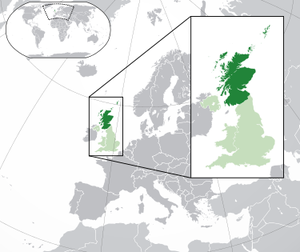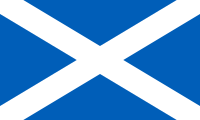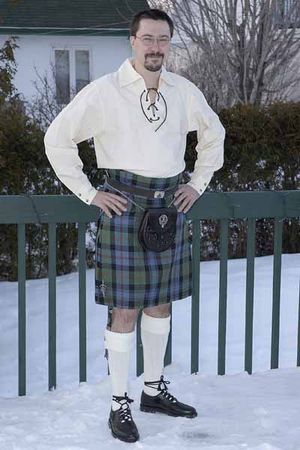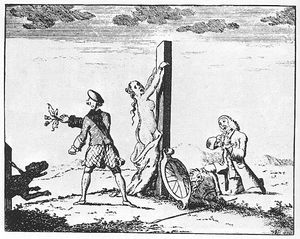Scotland
| Scotland |
|
|
Scotland is a country that is part of the United Kingdom. Covering the northern third of the island of Great Britain, mainland Scotland has a 96-mile (154 km) border with England to the southeast and is otherwise surrounded by the Atlantic Ocean to the north and west, the North Sea to the northeast, and the Irish Sea to the south. The country also contains more than 790 islands, principally in the archipelagos of the Hebrides and the Northern Isles. Most of the population, including the capital Edinburgh, is concentrated in the Central Belt – the plain between the Scottish Highlands and the Southern Uplands – in the Scottish Lowlands.
Scotland is divided into 32 administrative subdivisions or local authorities, known as council areas. Glasgow City is the largest council area in terms of population, with Highland being the largest in terms of area. Limited self-governing power, covering matters such as education, social services, and roads and transportation, is devolved from the Scottish Government to each subdivision. Scotland is the second-largest country in the United Kingdom and accounted for 8.3% of the population in 2012.
The Kingdom of Scotland emerged as an independent sovereign state in the Early Middle Ages and continued to exist until 1707. By inheritance in 1603, James VI of Scotland became King of England and Ireland, thus forming a personal union of the three kingdoms. Scotland subsequently entered into a political union with the Kingdom of England on 1 May 1707 to create the new Kingdom of Great Britain. The union also created the Parliament of Great Britain, which succeeded both the Parliament of Scotland and the Parliament of England. In 1801, the Kingdom of Great Britain entered into a political union with the Kingdom of Ireland to create the United Kingdom of Great Britain and Ireland (in 1922, the Irish Free State seceded from the United Kingdom, leading to the latter being officially renamed the United Kingdom of Great Britain and Northern Ireland in 1927).
Within Scotland, the monarchy of the United Kingdom has continued to use a variety of styles, titles, and other royal symbols of statehood specific to the pre-union Kingdom of Scotland. The legal system within Scotland has also remained separate from those of England and Wales and Northern Ireland; Scotland constitutes a distinct jurisdiction in both public and private law. The continued existence of legal, educational, religious, and other institutions distinct from those in the remainder of the UK have all contributed to the continuation of Scottish culture and national identity since 1707 incorporating union with England.
In 1999, a Scottish Parliament was re-established, in the form of a devolved unicameral legislature comprising 129 members, having authority over many areas of domestic policy. The head of the Scottish Government is the first minister of Scotland, who is supported by the deputy first minister of Scotland. Scotland is represented in the United Kingdom Parliament by 59 MPs. Scotland is also a member of the British–Irish Council, sending five members of the Scottish Parliament to the British–Irish Parliamentary Assembly, as well as being part of the Joint Ministerial Committee, represented by the first minister
Scotland is a constituent country of the United Kingdom. Scotland occupies the northern third of the island of Great Britain and shares a land border to the south-east with England. It has a population of about 5 million and three officially-recognised languages: English, Scottish Gaelic, and Scots.
The two main cultural areas of Scotland are the Lowlands and the Highlands.
Tartan is a specific woven textile pattern that often signifies a particular Scottish clan, as featured in a kilt.
Spanking in Scotland
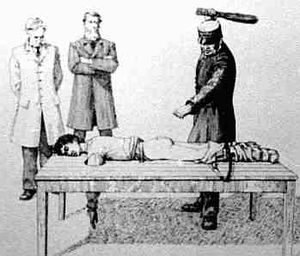
Throughout history, Spanking was as common in Scotland as in the rest of the UK. Scotland also had judicial corporal punishment for a long time. In the year 1936, 230 juveniles under 16 years of age were ordered to be birched. See also whipping table.
The tawse
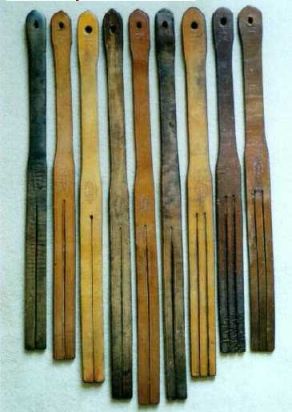
The tawse, a spanking implement that is a kind of leather strap with its end cut in two or more 'tongues', originates in Scotland. It was preferred to the cane for school corporal punishment, but used more commonly on the student's palms than on their buttocks.
Scottish spanking clubs
Scottish spanking actors and actresses
See also
Chat rooms • What links here • Copyright info • Contact information • Category:Root
